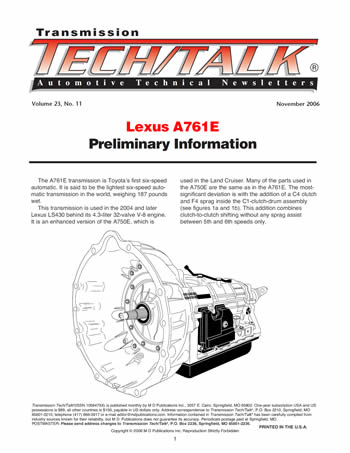

The A761E transmission is Toyota’s first six-speed automatic. It is said to be the lightest six-speed automatic transmission in the world, weighing 187 pounds wet.
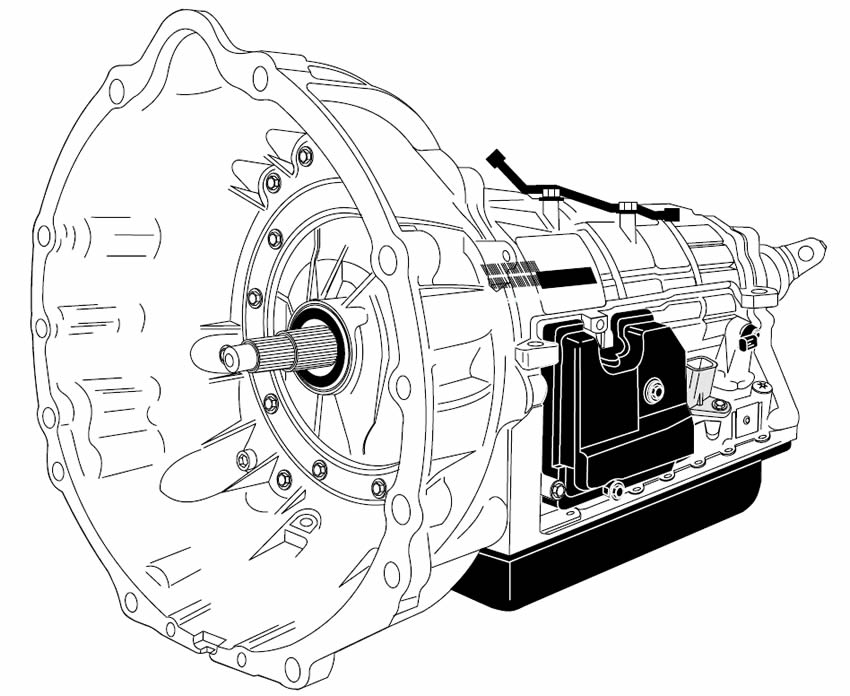
This transmission is used in the 2004 and later Lexus LS430 behind its 4.3-liter 32-valve V-8 engine. It is an enhanced version of the A750E, which is used in the Land Cruiser. Many of the parts used in the A750E are the same as in the A761E. The most-significant deviation is with the addition of a C4 clutch and F4 sprag inside the C1-clutch-drum assembly (see figures 1a and 1b). This addition combines clutch-to-clutch shifting without any sprag assist between 5th and 6th speeds only.
The computer strategy that operates the transmission is called ECT-i: Electronically Controlled Transmission with intelligence. The ECT-i uses additional electronic controls to adjust hydraulic pressure gradually for even smoother shifts. The ECT-i computer also has a limited ability to adjust for wear in the transmission and even to learn and respond to a person’s driving behavior (based on the resulting engine input conditions).
One strategy of the ECT-i is to partially disengage the C1 (forward) clutch during stops to increase fuel efficiency. Another strategy for increasing fuel efficiency is that fuel cut is maintained during 6th-5th/5th-4th decelerations.
Gear Ratios
- First . . . . . . . . . . . . . . . . . . 3.296
- Second . . . . . . . . . . . . . . . 1.959
- Third . . . . . . . . . . . . . . . . . 1.348
- Fourth . . . . . . . . . . . . . . . . 1.000
- Fifth . . . . . . . . . . . . . . . . . 0.726
- Sixth . . . . . . . . . . . . . . . . . 0.582
- Reverse . . . . . . . . . . . . . . 2.951
See figures 1a and 1b for a clutch-application chart.
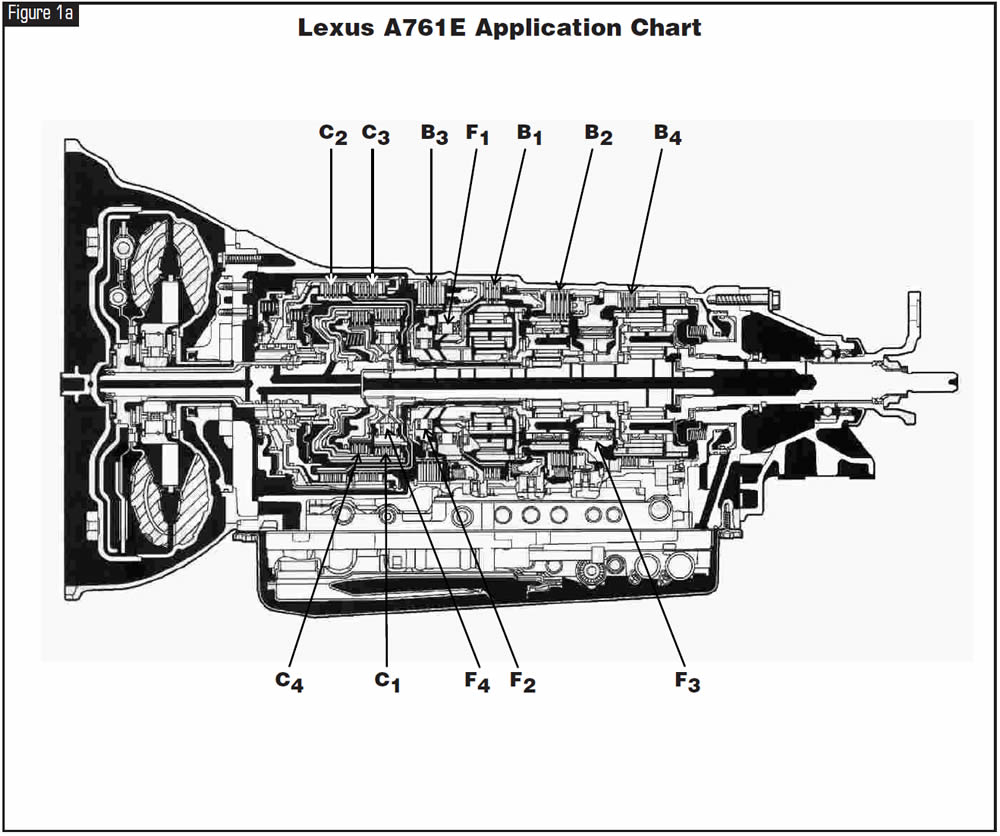
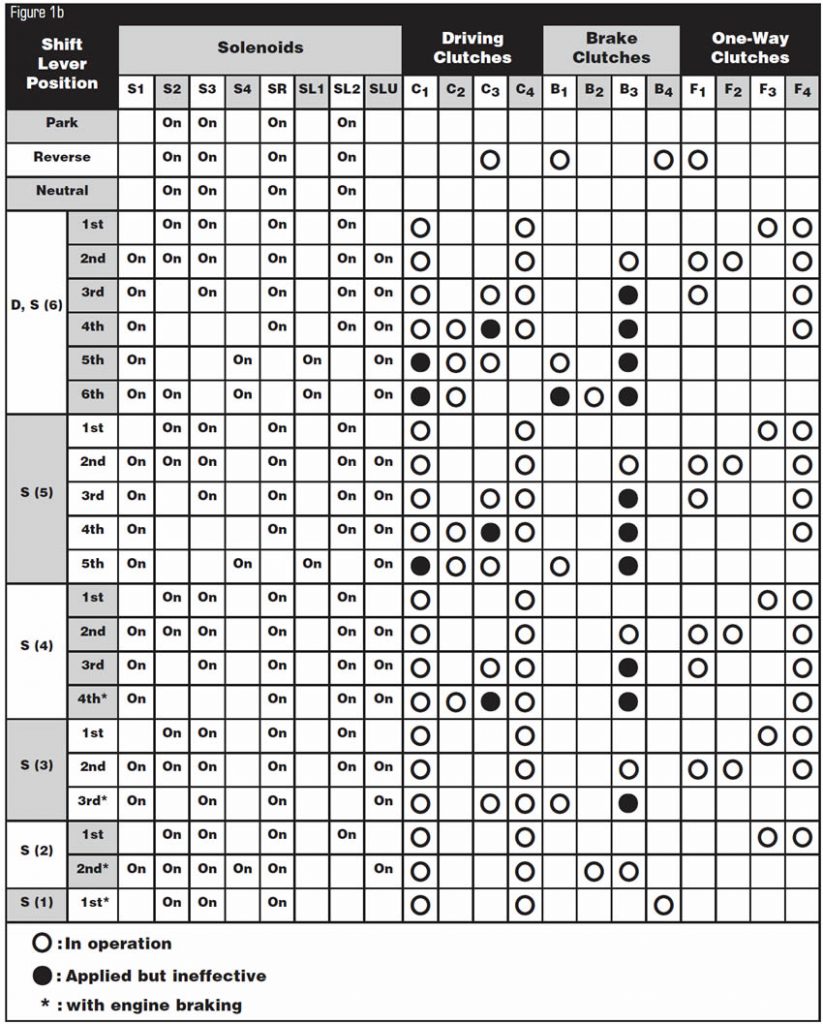
Refer to Figure 2 for an electrical-wire diagram.
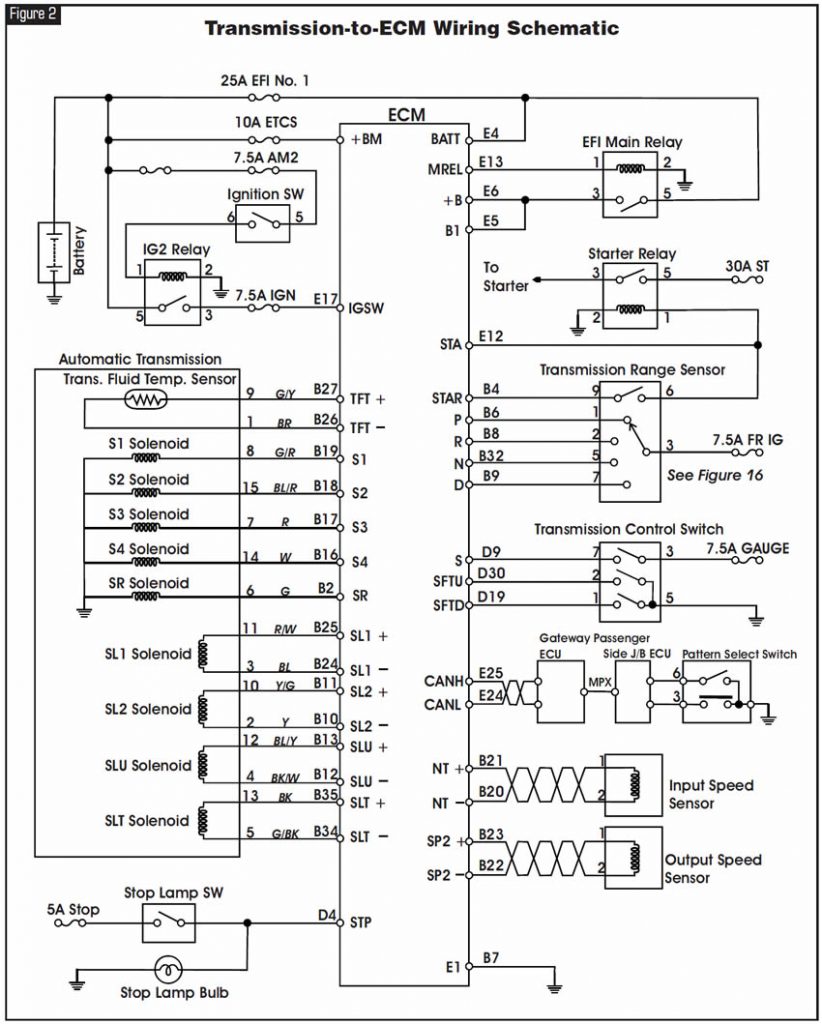
Solenoid resistance checks from the case connector or from the ECM are shown in Figure 3.
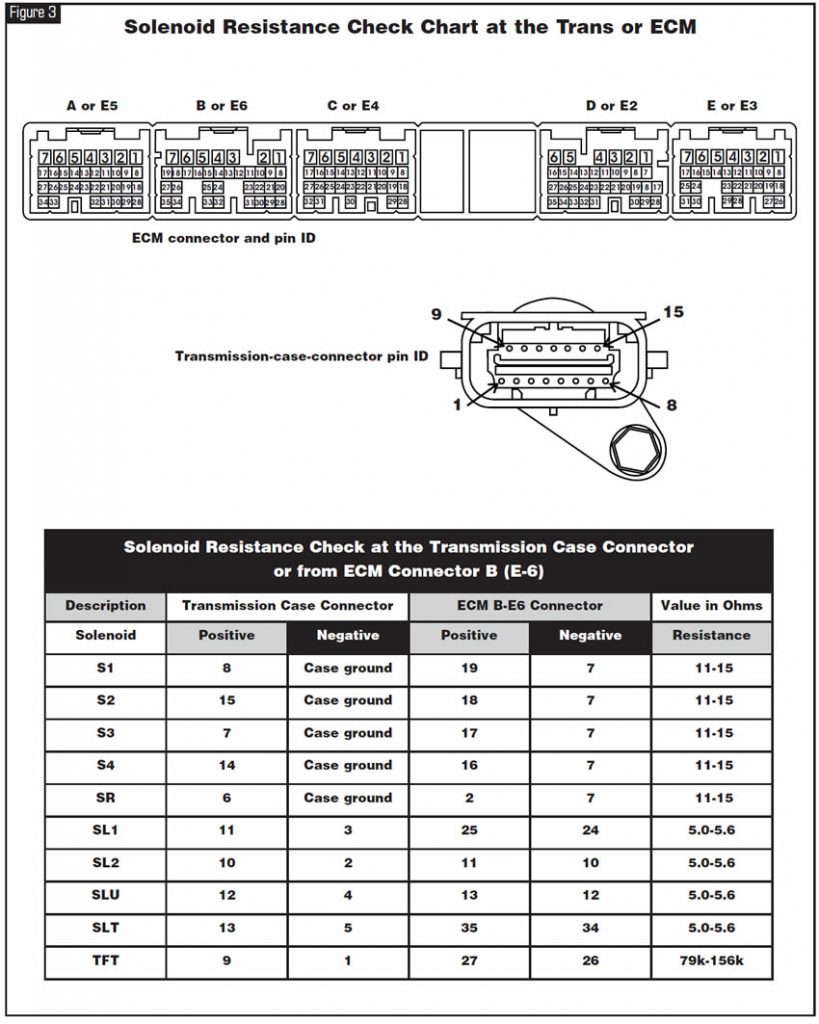
Figure 4 provides a transmission-range-sensor check chart.
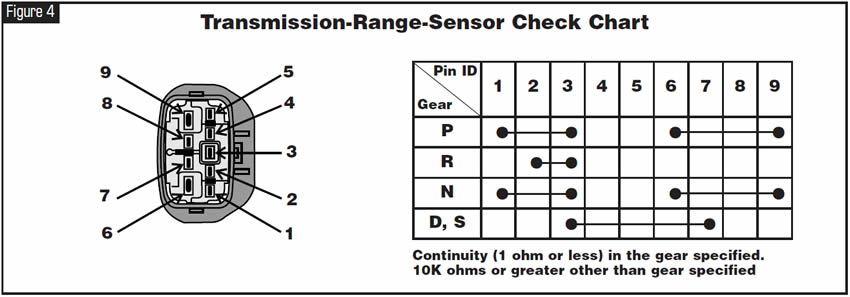


Transmission-fluid check
The A761E transmission does not use a conventional filler tube and dipstick for filling the transmission and checking the fluid level. At the bottom of the pan you will find two plugs, one of which is marked as
“check” (see Figure 5). The other is a drain plug.
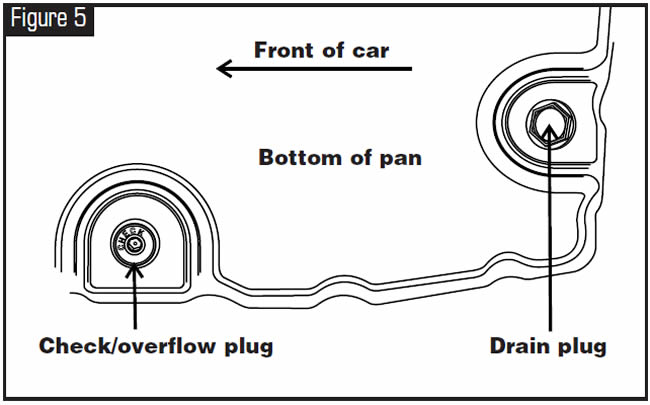
Looking inside the pan in Figure 6, you can see that on the other side of this check plug is a check pipe. Fluid is to be added until the level is high enough to run over and out of the check pipe.
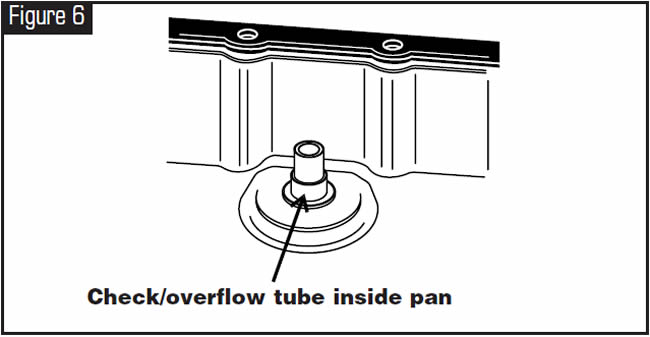
To fill the transmission, there are two options. The first, which the manufacturer suggests, is to remove the case cover from the side of the transmission (see Figure 7).
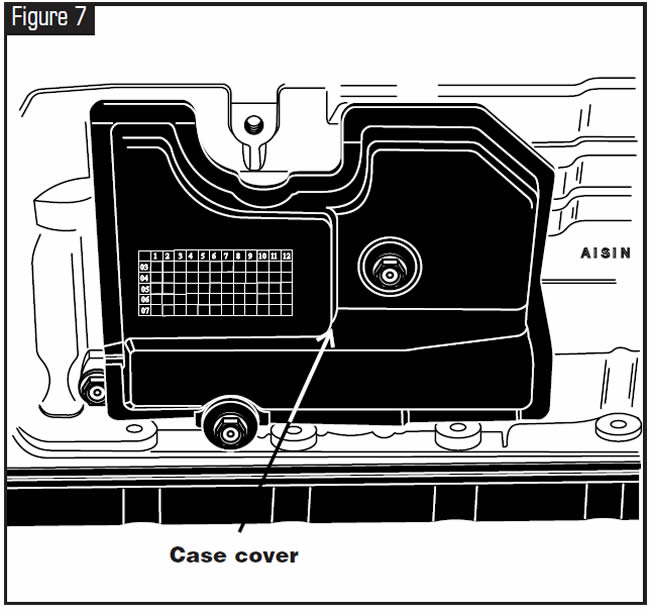
When the cover is removed, a 24mm fill plug becomes accessible (see Figure 8).
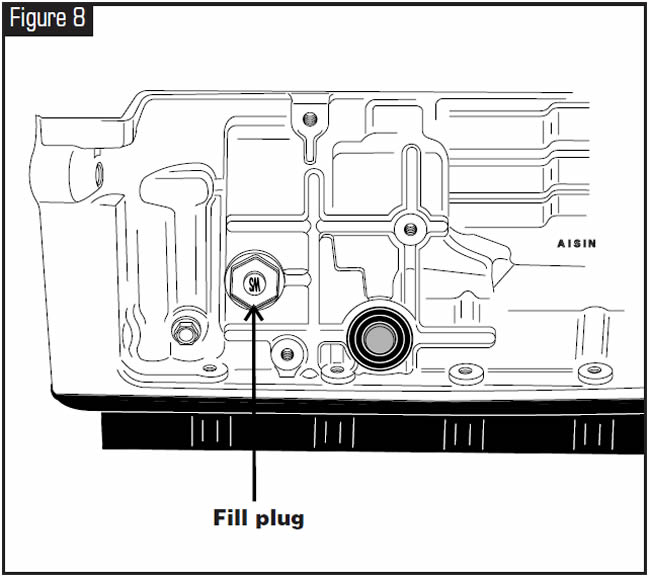
But farther back on the same side of the case is another location that can be used to fill the transmission without having to pull this case cover off (see Figure 9). This 55 Torx-head bolt is just below the output-shaft speed sensor, so you must take care not to damage the sensor when you access this location.
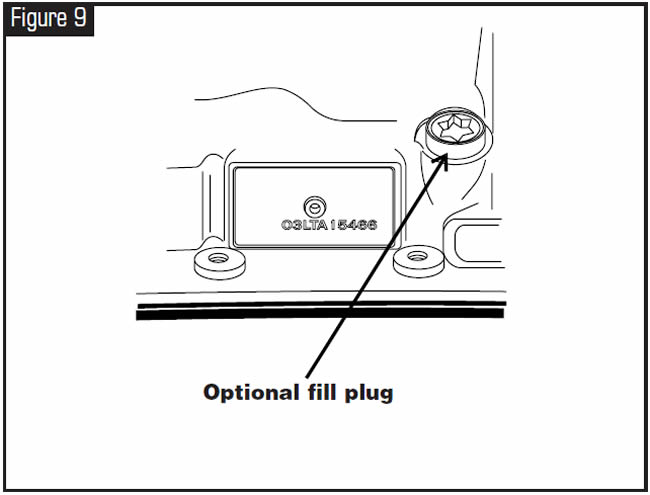
This transmission uses a “WS” designated fluid and will require 11.5 quarts (10.9 liters) on a dry fill, and 3.2 quarts (3.0 liters) on a drain and refill.
Main line-pressure check
The main line-pressure tap is on the side of the case (see Figure 10). Refer to the accompanying chart for pressure specifications.
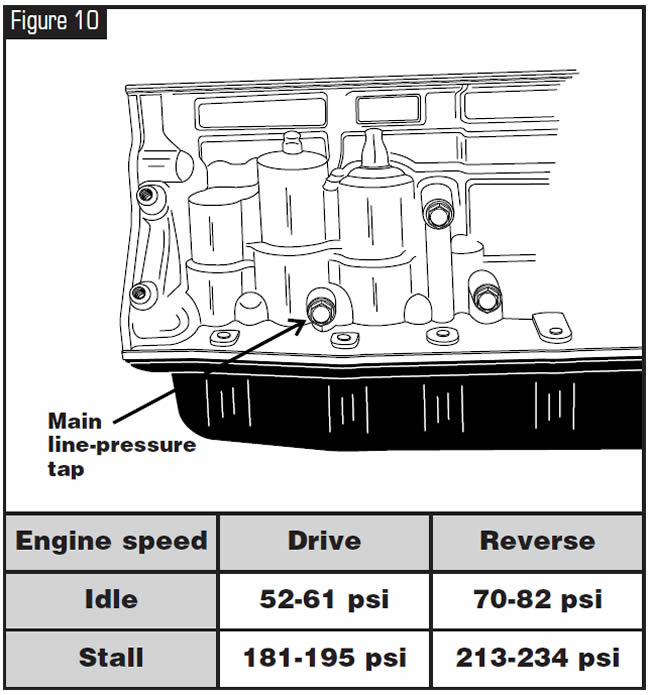
Basic Pressure Diagnostics:
- If pressure is high in all ranges and there are no DTCs, suspect a mechanical problem with the SLT solenoid or the pressure-regulator valve.
- If pressure is low in all ranges, suspect a mechanical problem with the SLT solenoid, pressure-regulator valve, pump or filter.
- If pressure is low in the “D” position only, suspect a leak in the “D” hydraulic circuit or the C1 clutch.
- If pressure is low in the “R” position only, suspect a leak in the “R” hydraulic circuit or the C3 or B4 clutch.
Valve-body removal:
Remove the bolts indicated in Figure 11 to remove the valve body. Each bolt is lettered for length to help you in identification and position when re-installing the valve body.
- A: 0.98 inch (25 mm)
- B: 1.42 inch (36 mm)
- C: 1.77 inch (45 mm)
- D: 1.97 inch (50 mm)

Figure 12 shows the locations of the solenoids in the valve body.



November 2006 Issue
Volume 23, No. 11
- Lexus A761E: Preliminary Information

